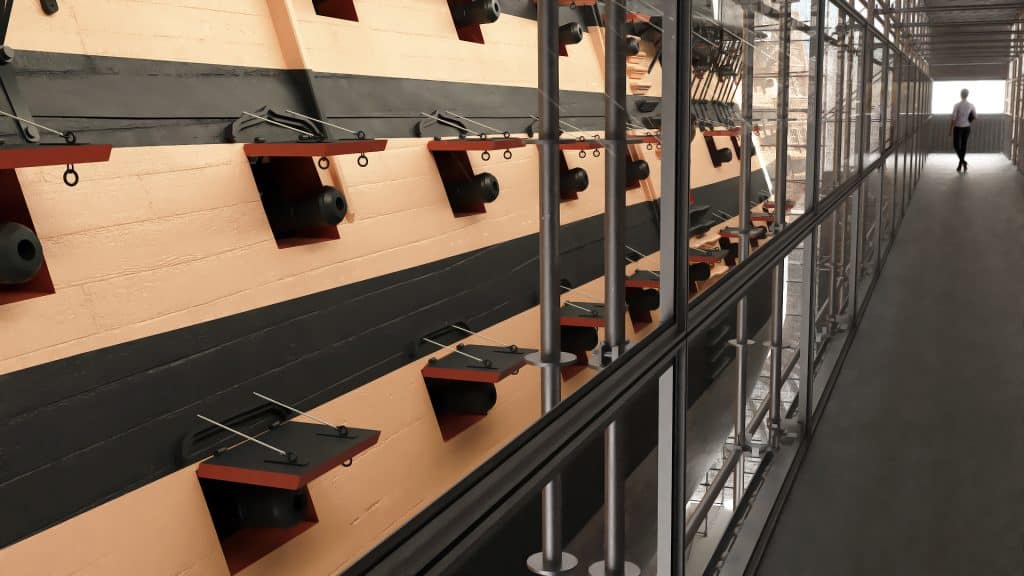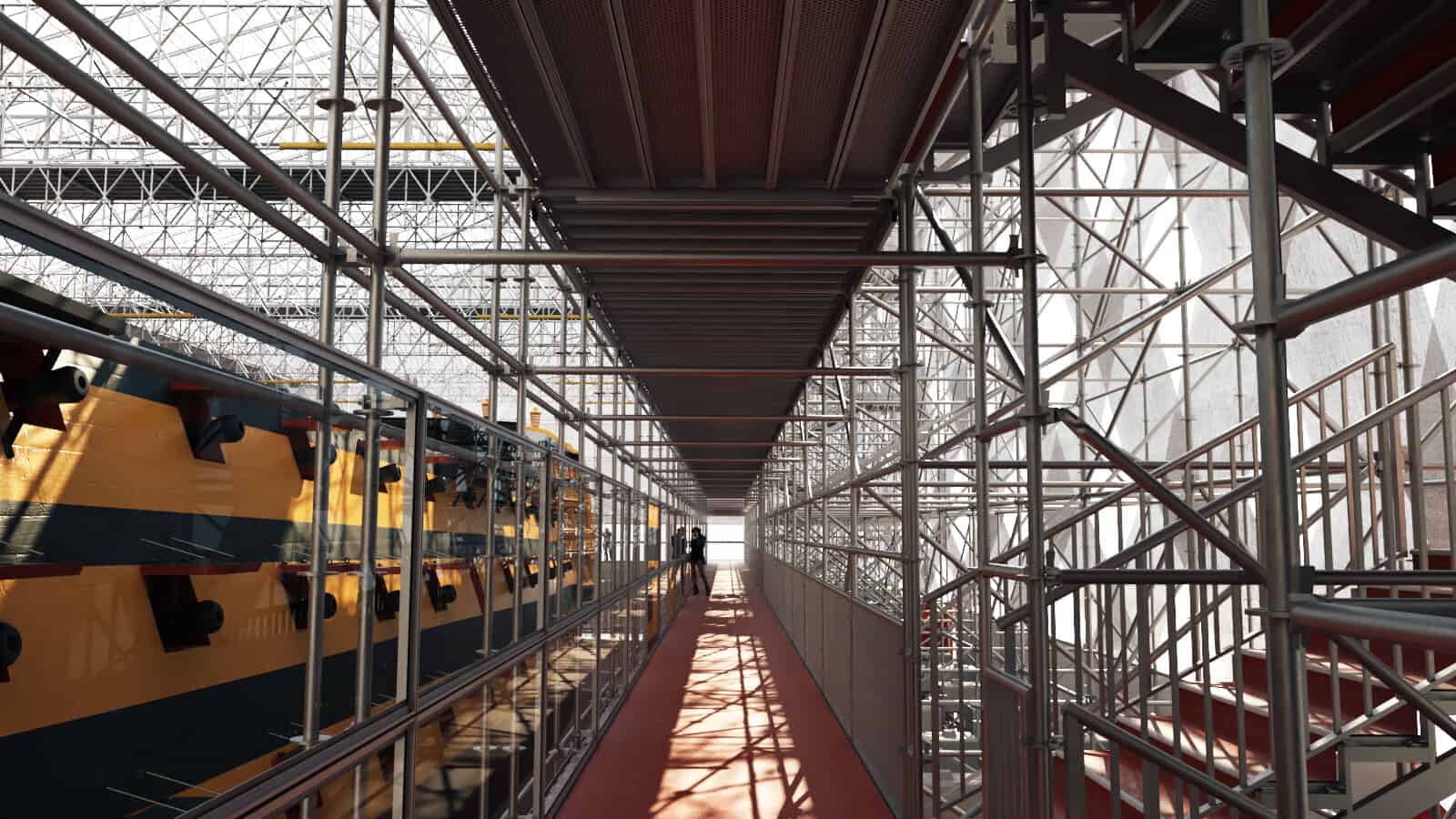PHD Access has won the prestigious contract from the National Museum of the Royal Navy to provide the specialist access required for the latest stage of the renovation of the world-famous HMS Victory.
The specialist scaffolding company has designed a full-enclosed scaffolding installation that will allow the vital conservation work to take place while simultaneously allowing the public to continue to visit Vice-Admiral Lord Nelson’s iconic flagship at Portsmouth Historic Dockyard.
The latest phase of the conservation work is part of a wider 10-year renovation project that will ultimately see rotten wooden planks painstakingly removed and replaced in a bid to preserve the 18th century ship for future generations.
A temporary building will be constructed by PHD Access over one section of Victory at a time, initially allowing the process of drying to take place and then continuing to keep her weathertight during conservation work.
The specially-designed, public-friendly platforms and the temporary building will move along the 227 feet long ship in three phases as the work progresses.

PHD Access has been awarded the £4million access contract for the renovation work which is taking place exactly a century after the ship was first moved to a dry dock in 1922.
The Uxbridge-based company, which provides specialist access across the globe in a number of different sectors, has a proven track record of providing specialist structures for heritage projects renovations, including the refurbishment of Elizabeth Tower (known as Big Ben) and the Cutty Sark restoration.
PHD Access is due to complete the first phase of the installation in time for the busy summer holiday period.
The company will use specialist 160-tonne cranes to scaffolding installation over the 62-metre high ship.
Danny Dwyer, Managing Director of PHD Access, said: “We are immensely proud to have won this prestigious contract to create the access structure that will allow conservation work to be carried out on HMS Victory.
“One of our great strengths is being able to create specifically designed access solutions for difficult or unusual projects. This is one reason why we have created a good reputation when it comes to working with heritage projects which often have their own unique challenges that need to be successfully overcome.
“A key requirement for this project was to create a viable access solution that not only allowed the specialists to carrying out the conservation work but that also allowed the public to have a close-up view of the renovation at the same time.
It is an honour to think we will have played our part in helping to preserve this important piece of history.”
Professor Dominic Tweddle, Director General of The National Museum of the Royal Navy said: “After ten hard years exhaustively studying HMS Victory from bowsprit to beetles (yes really) and then designing and fitting a new high-tech support system, the next stage of the works begins. ?
Victory will be partly covered to allow rotten wood to be painstakingly removed and replaced. ?And the brilliant thing is that our visitors will be able to get close up and personal with the ship and see the works close up under the guidance of our expert ship wrights!!”
Andrew Baines, Project Director for HMS Victory explained: “Conservation work on HMS Victory steps up a gear now as we enter a hugely significant phase that will temporarily transform her and open up an incredibly exciting opportunity to see her in a new light and interpret her story in a way never done before.
“We need to construct access scaffold, inside the temporary building, to allow our shipwrights and conservators access to the rotten hull planking in order to remove it. Once removed, we must then let what’s left dry out, before we can then make repairs and then re-plank with new timber.”
“The decade-long project will ensure the ship is protected for the next half century, as the ship’s rotten outer shell is removed and replaced with new oak. Repairs will be made to the ship’s structural framework and she will be fully re-rigged, in a process lasting ten to fifteen years and costing £35 million.
Victory’s ceremonial function as flagship of the First Sea Lord will continue and the white ensign will still be flown from the ensign staff.”



